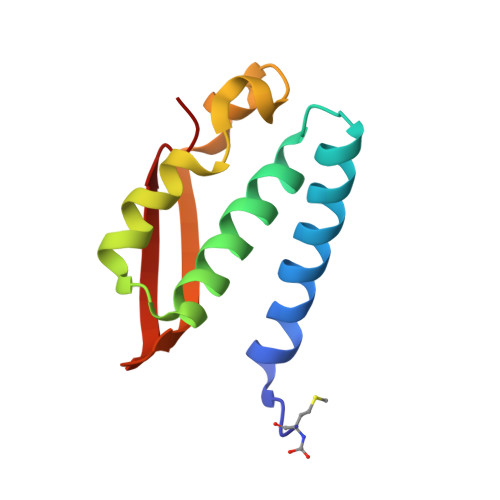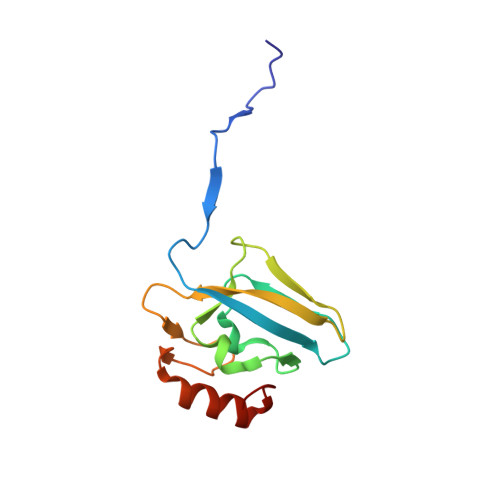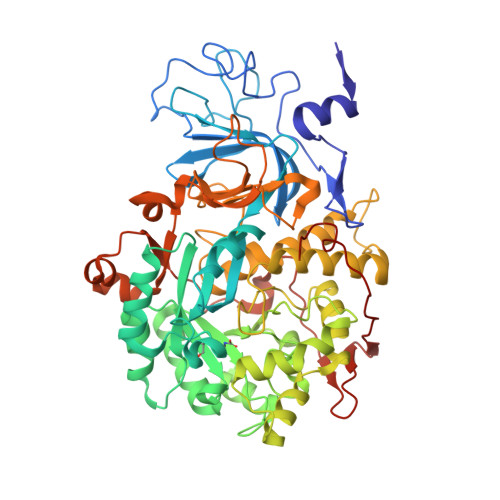The Impact of pH on Catalytically Critical Protein Conformational Changes: The Case of the Urease, a Nickel Enzyme.
Mazzei, L., Cianci, M., Benini, S., Ciurli, S.(2019) Chemistry 25: 12145-12158
- PubMed: 31271481
- DOI: https://doi.org/10.1002/chem.201902320
- Primary Citation of Related Structures:
6RKG, 6RP1 - PubMed Abstract:
Urease uses a cluster of two Ni II ions to activate a water molecule for urea hydrolysis. The key to this unsurpassed enzyme is a change in the conformation of a flexible structural motif, the mobile flap, which must be able to move from an open to a closed conformation to stabilize the chelating interaction of urea with the Ni II cluster. This conformational change brings the imidazole side chain functionality of a critical histidine residue, αHis323, in close proximity to the site that holds the transition state structure of the reaction, facilitating its evolution to the products. Herein, we describe the influence of the solution pH in modulating the conformation of the mobile flap. High-resolution crystal structures of urease inhibited in the presence of N-(n-butyl)phosphoric triamide (NBPTO) at pH 6.5 and pH 7.5 are described and compared to the analogous structure obtained at pH 7.0. The kinetics of urease in the absence and presence of NBPTO are investigated by a calorimetric assay in the pH 6.0-8.0 range. The results indicate that pH modulates the protonation state of αHis323, which was revealed to have pK a =6.6, and consequently the conformation of the mobile flap. Two additional residues (αAsp224 and αArg339) are shown to be key factors for the conformational change. The role of pH in modulating the catalysis of urea hydrolysis is clarified through the molecular and structural details of the interplay between protein conformation and solution acidity in the paradigmatic case of a metalloenzyme.
Organizational Affiliation:
Laboratory of Bioinorganic Chemistry, Department of Pharmacy and Biotechnology, University of Bologna, Bologna, Italy.
























